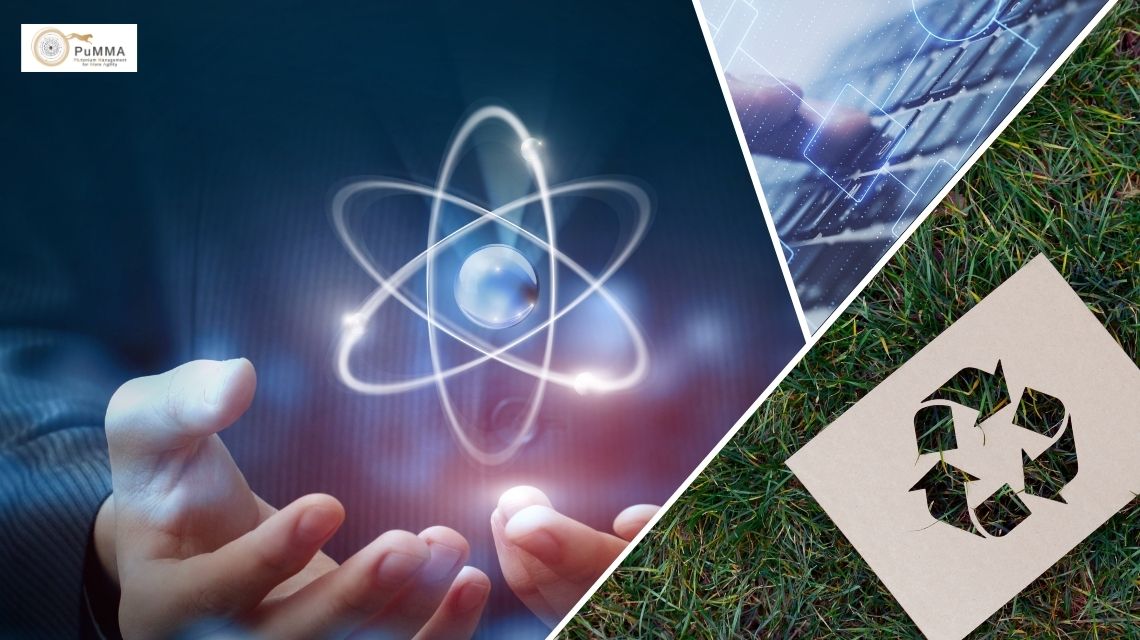Italian National Agency for New Technologies, Energy and Sustainable Economic Development

Energy: Fourth generation nuclear power, ENEA studies more sustainable fuels
Improving sustainability and performance of fourth generation nuclear reactors[1] by encouraging the recycling of used nuclear fuel to leave long-lived waste behind is the objective of the project PuMMA (Plutonium Management for More Agility), comprising 20 partners from 12 European countries, including ENEA for Italy. Specifically the project, co-funded by the Euratom programme, aims to evaluate the impact of the high content of plutonium (around 40%), used as fuel in fast nuclear reactors and its effects on safety and performance, and the scenarios for integrating the technology with those currently in use to make nuclear power increasingly sustainable.
“The use of MOX, a fuel consisting of a mix of uranium oxide and plutonium, allows to obtain a more sustainable nuclear fuel, available in large quantities,” explained Alessandro Del Nevo, head of the ENEA Experimental Engineering Division at the Nuclear Department and project contact. “However, the understanding of MOX fuel behavior must be continuosly improved to ameliorate its performance and ensure plant safety”.
The activities pertaining the project include both simulations through modeling and software and experimental analyses. The tests used already available data[2] on MOX with a high plutonium content, irradiated and analysed through destructive and non-destructive testing. “The preliminary results are promising, but we need to improve our models, based mainly on data from experiments on traditional water reactors” said Del Nevo. Specifically, ENEA contributes with seven other partners to simulation and modeling activities[3] to increase knowledge on the behavior of the materials used during reactor operation.
The nuclear fuel pellets, stacked up in cylindrical rods, constitute, together with the external sheath of the rod, the first containment barriers of the fission products. “Understanding how the materials of which the 'tablets' are made can be deformed or damaged by irradiation activity is essential to increase reliability and prolong the useful life of the fuel, without affecting safety margins” said Del Nevo.
“During the project, a significant milestone was achieved by replicating the behavior of nuclear fuel through FEM (Finite Element Method) analysis, a simulation technique that allows to calculate the structural behavior of a complex system by breaking it down into smaller, more manageable units” concluded Del Nevo.
The PUMMA project also co-funded the research doctorate of “Diego Jaramillo Sierra” from the Polytechnic of Milan at the ENEA Research Center in Brasimone (Bologna).
For more information please contact:
Alessandro Del Nevo, ENEA - Head Experimental Engineering Division of the Nuclear Department, .
To keep updated on the initiatives of the PuMMA project, a 60 lesson-course, Decoding the Fuel Cycle, is available.
Notes
[1] Nuclear reactors are usually categorized by "generation" (I, II, III, III+ and IV) based on the key attributes characterizing their development and use at an industrial level. Fourth generation reactors differ from those currently in operation (over 90% are second generation) due to the cooling system which uses lead or sodium instead of water; the physical characteristics of lead or sodium ensure the presence of a coolant in accidental scenarios. The intrinsic properties of the coolant adopted and the use of passive systems make the system extremely reliable, simplifying accident management.
[2] Produced by the Commissariat à l'énergie atomique et aux énergies alternatives - CEA (France) and Nuclear Research and consultancy Group - NRG (Holland).
[3] The simulation activities are conducted through the TRANSURANUS performance code, a software for the thermal and mechanical analysis of irradiated fuel rods in nuclear reactors developed by JRC-Karlsruhe.



